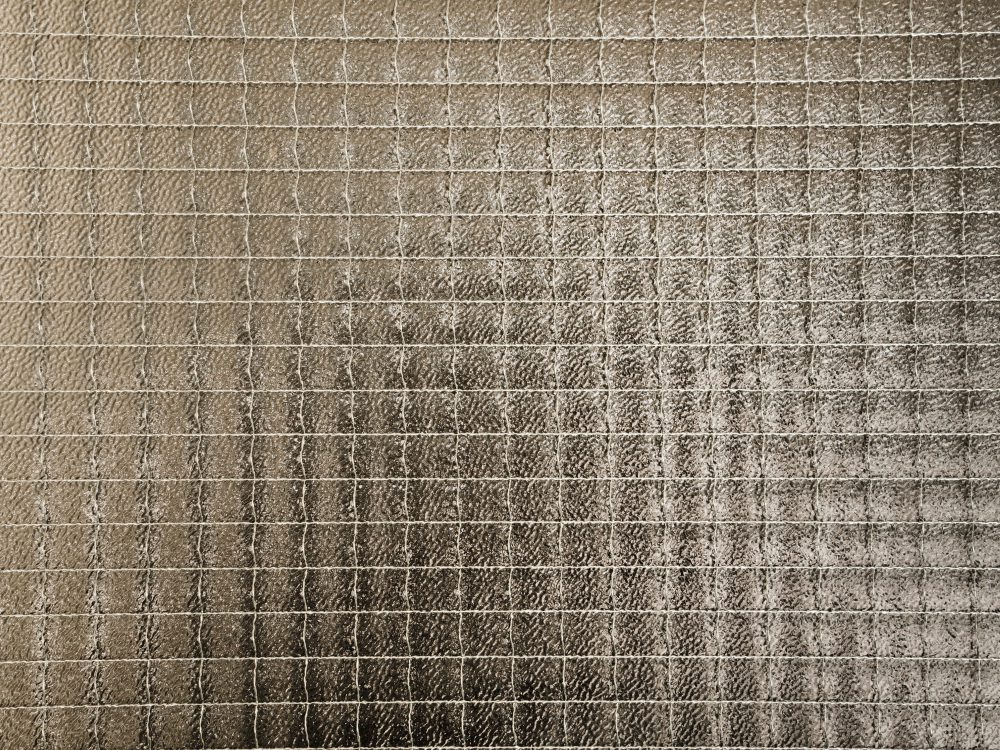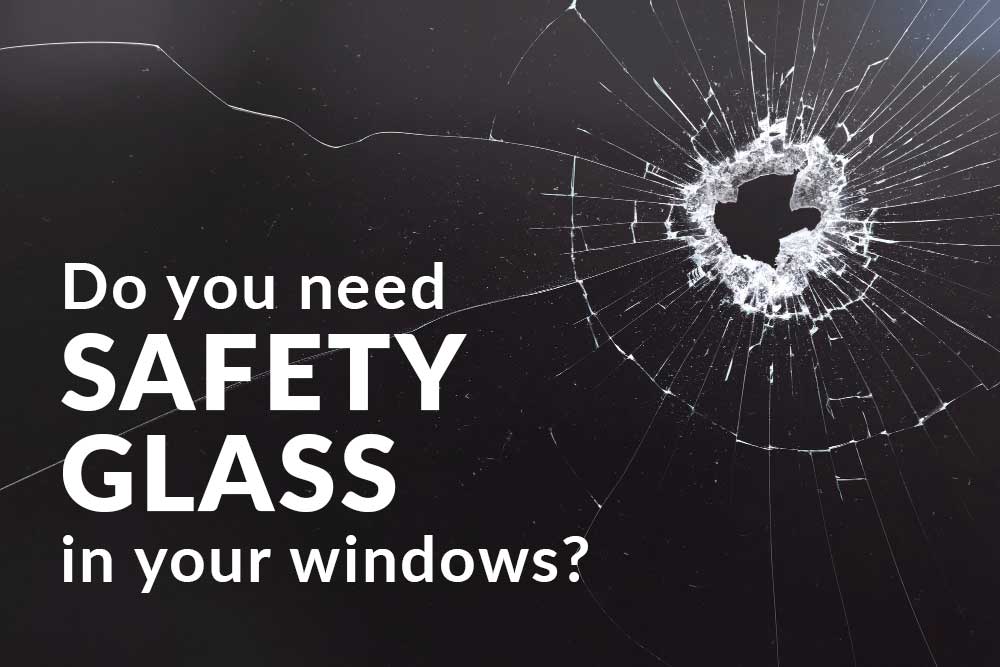When you’re looking for replacement windows for your home, you might wonder if you should invest in safety glass instead of regular annealed windows. In general, safety glass is slightly more expensive than standard glazing. However, this premium comes with its own set of benefits. In this article, we’ll cover everything you need to know about whether you need safety glass in your windows, and whether you should invest to get it.
What is Safety Glass?
Safety glass is glass that’s specially designed to be shatterproof. While regular glass can shatter if it’s hit or dropped from a high enough height, safety glass has been specially treated to make it stronger. This reduces the likelihood that it will break when it’s hit with a force and will also reduce the size of the shards if it does break.
Toughening glass to make it stronger
There are three main types of safety glass –
- Tempered Glass
- Laminated Glass
- Wired Glass
What is Tempered Glass?
Tempered Glass – sometimes called toughened glass – is made by heat treating annealed glass. (According to this website “Annealed glass has undergone a cooling treatment at a glass fabricator’s float plant as a way to improve durability.”).
The glass is heated and then cooled rapidly, usually by blowing air onto both sides at once – called air quenching. This fast-cooling process makes the glass contract and become denser and, as a result, stronger. This improved tensile strength makes tempered glass around four times stronger than annealed glass of the same thickness.
Benefits of Tempered Glass
Tempered glass is identical to annealed glass in colour and chemical composition – they both let the same amount of light in. Tempered glass offers much better wind resistance though, making it perfect for larger panes or situations where there are strong winds, such as high-rise buildings.
Tempered glass also is also more likely to survive impacts from objects too. This also makes buildings more secure as intruders will have a harder time breaking the glass to gain access – it’s more likely to survive those stray football blasts from the kids as well!
Why is Tempered Glass Safety Glass?
One of the characteristics of tempered glass is that when it does shatter, it breaks into tiny little cubes, rather than potentially dangerous shards. It’s this aspect that qualifies tempered glass as safety glass.
Finally, tempered glass cannot be cut or drilled, and is resistant to high temperatures, making it perfect for shop front windows and areas of high thermal stress.
What is Laminated Glass?
Laminated glass, as you can probably guess, is glass that is strengthened with plastic film. The plastic layer – specifically polyvinyl butyral (PVB) – is sandwiched between two layers of glass, rather than coating the glass with the film. A special oven called an ‘autoclave’ is used to fuse the unit together using heat and pressure. Any glass can be used to make laminated glass – including tempered glass for even more strength.
Benefits of Laminated Glass
The PVB layer can be given different qualities making it adaptable for different situations. It’s strength makes if perfect for windscreens in vehicles. It’s easy to tint too – in fact that blue-green layer on your car windows is the edge of the laminate layer.
Laminated glass can also be used to reduce the transmission of solar energy and screen out ultraviolet radiation. Its strength makes it great for larger panes, especially sloped areas, and it has fantastic sound-reducing properties. It’s another good option for improved security.
Laminated glass can also be used to add strength to buildings (and vehicles) by improving structural integrity.
Why is Laminated Glass Safety Glass?
When laminated glass does break, the pieces stick to the PVB layer, rather than flying off all over the place. This reduces the risk of getting cut by flying glass. The combination of laminated and tempered glass makes it perfect for car windscreens.
Wired Glass
Wired glass is a pane that has a thin wire mesh embedded in it. Surprisingly, the wire does not add to the strength of the glass. In fact, wired glass is only half the strength of standard glass, and it cannot be tempered.
Why is Wired Glass Safety Glass?
When broken, the wire mesh holds all the shard of glass together. Potentially dangerous pieces of glass won’t flying off and injure people in the event of impact. The pieces of glass won’t fall on the floor either.
Wired glass is generally used in doors in offices, hospitals, schools and prisons. It’s not very pretty, it’s not really that practical but it can be fire rated and it can be cost effective.

What are the advantages and disadvantages of Safety Glass?
Advantages of Safety Glass
Safety
People are less likely to be injured if they do happen to break safety glass. The deadly shards are either contained to the pane – wired or laminated glass – or reduced to smaller, less sharp fragments as with toughened glass.
Security
Safety glass will make your home or business more secure from intruders. It’s hard to break without making lots of noise and attracting unwanted attention. Simply placing a sticker in one corner of the pane indicating that it’s made of safety glass can be enough to deter burglars.
Strength
You may need the strength of safety glass to keep your windows from getting broken by accident. Protection from kicking balls or throwing things, stones thrown up by vehicles or just strong winds are good reasons to install safety glass.
Long Service Life
Stronger glass will obviously last longer than standard glass as it’s less vulnerable to being broken by objects. It has better weather resistance too. As mentioned above, it’s less likely to be broken by strong winds. It’s also heat contraction and expansion which can crack the glass.
Protection from the Elements
Having better UV protection is a great safety feature. Laminated glass can filter out the harmful radiation from the sun, without reducing the amount of light being let into a room.
Greater energy efficiency
Laminated glass can have reduced heat transference properties. Heat is kept in a room, making it warmer in the winter and using less energy to make the home comfortable. Heat is also kept out of the room is the summer, making rooms a welcome sanctuary from the blazing summer heat.
Disadvantages of Safety Glass
Cost
All these processes and extra materials come with a price, and this is the price. Safety glass is more expensive than standard glass. The cost depends on your exact specifications. For example, a bifold door with tinted glass with a high U-value will be quite expensive. A fire door in an office, school or hospital is also a costly item, but what price safety?
Weight
Safety glass can be heavier than standard glass. This added weight can make doors harder to open (and more dangerous if they slam shut). Sash windows can also be harder to lift – though this problem is often overcome by more sophisticated pulley systems. This is not a problem with toughened glazing.
Summary
Safety glass is a good option for any situation – commercial or residential. The added safety, security and protection from the elements outweigh the extra cost. There are many options and benefits to safety glass, and any home can benefit from having it installed to suit the particular needs of the owner.
It is also worth noting that safety glass is often required within building regulations and we will always endeavour to pick this up in our quotations and ensure compliance.
To find out more about the glass installed in Gowercroft windows, visit our glass specification page here – https://www.gowercroft.co.uk/glass-specification/ – or give us a call to discuss your requirements.

